The old town center of Novi Sad comprises the urban space around Liberty Square, Zmaj Jovina and Dunavska streets.
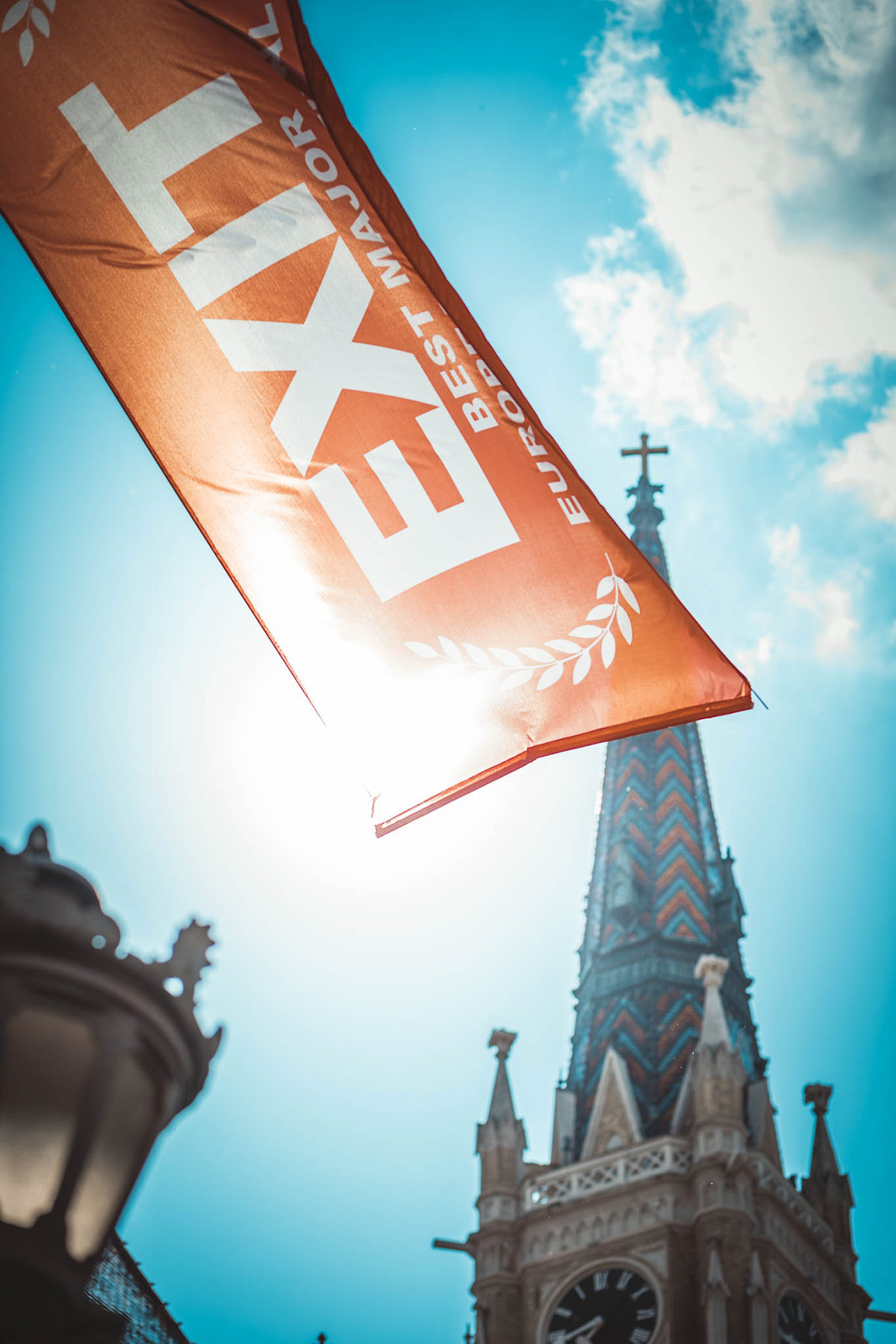
Liberty Square is dominated by the Town Hall built in 1894 and the Roman Catholic Church of the Name of Mary built between 1893 and 1895. It is also adorned by Hotel Vojvodina, the oldest hotel in Novi Sad (1854), and the Bank of Vojvodina building (1892). The building of the Roman Catholic Parish Office (1808), the Serbian Orthodox Church of the Assumption (1776), and the Synagogue (1909) are also in the vicinity.
The square itself boasts a monument to Svetozar Miletić, the most important political figure and leader of the Serbs in Vojvodina in the 19th century. The statue was built by the famous sculptor Ivan Meštrović.
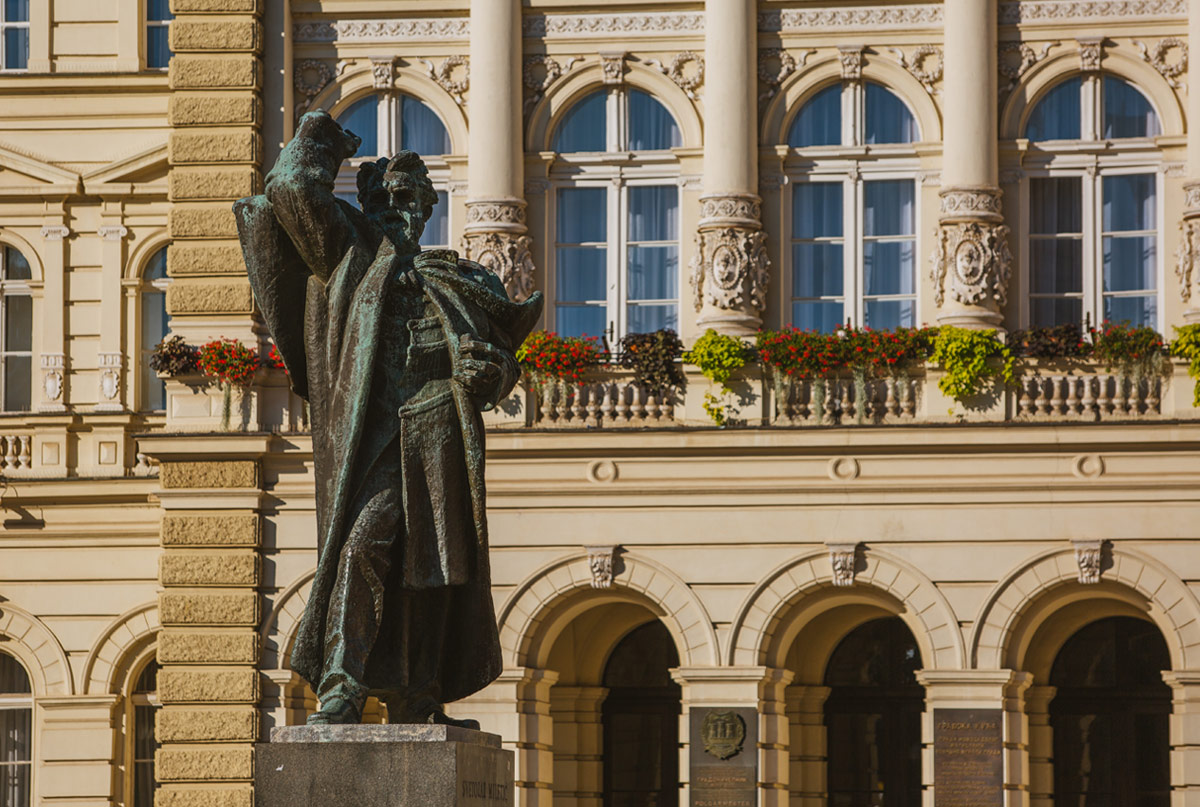
One of the oldest streets in Novi Sad — Zmaj Jovina Street is in the immediate vicinity, as well as Dunavska Street. They make up a pedestrian zone interspersed with passages featuring many shops, restaurants, pastry shops, and craft shops.
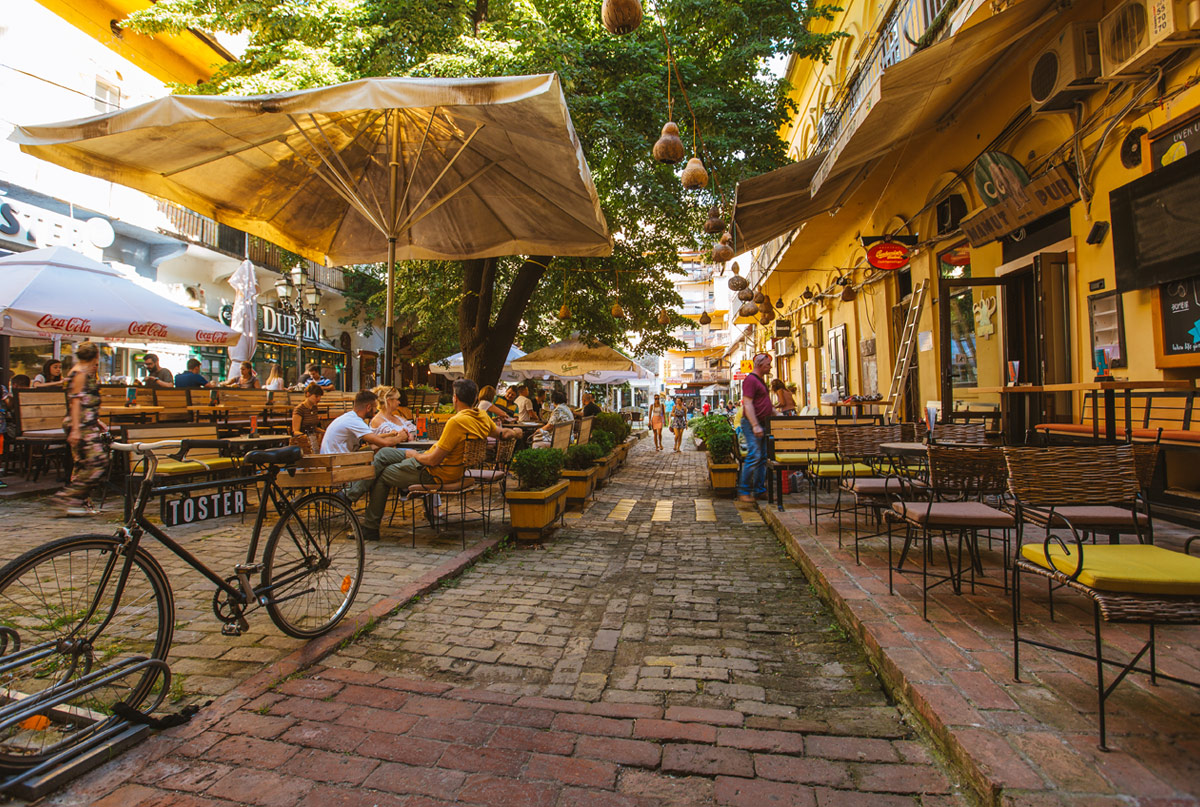
The Bishop’s Palace of the Eparchy of Bačka, built in 1901, is one of the most significant buildings in this zone. In front of it, there is a monument to the doctor and poet Jovan Jovanović Zmaj. The City Library, the Museum of Vojvodina, and the Museum of Contemporary Art of Vojvodina are located in Dunavska Street, while the Danube Park, a natural monument and protected natural asset established in the 19th century, is adjacent to the street.
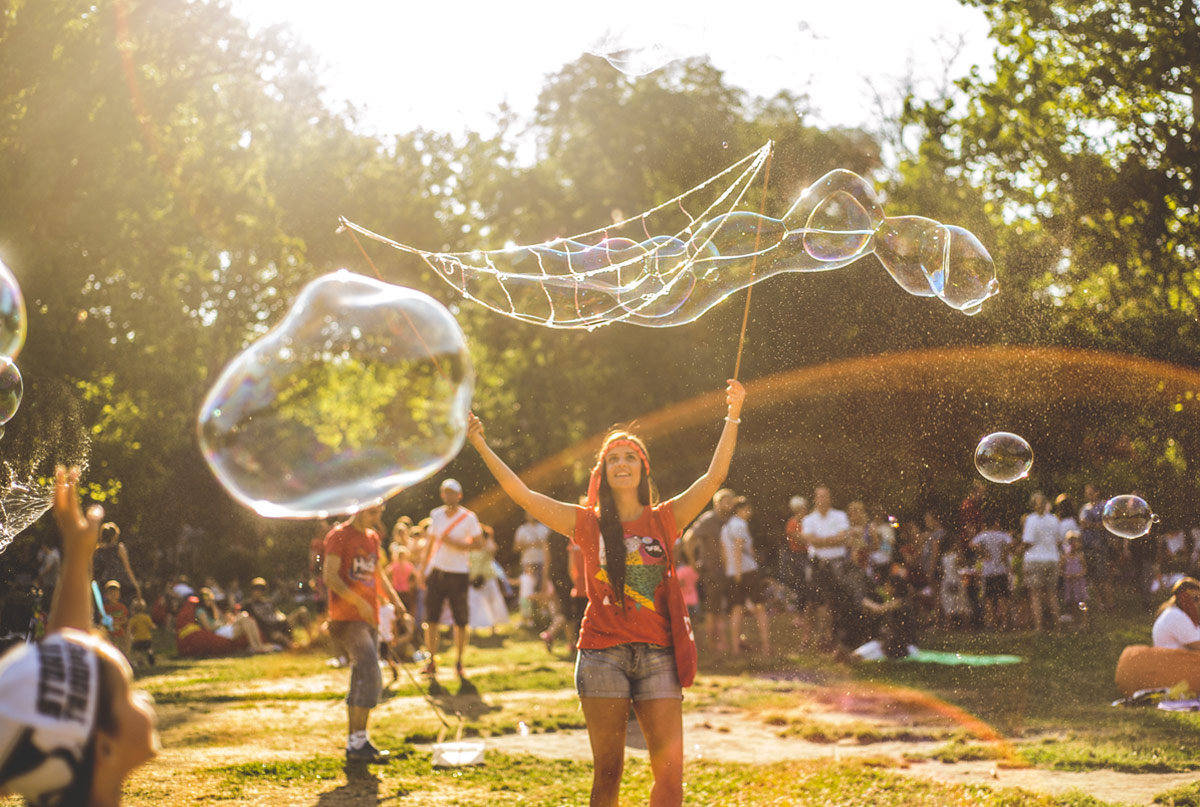
River Danube
After visiting the Fortress and the town center, do not miss out on discovering the beauty of this river city. The Danube is “Novi Sad’s main street” and the city leans on the river not only with its oldest streets and most notable buildings, but also new city districts, promenades, beaches, taverns, and vacation homes.
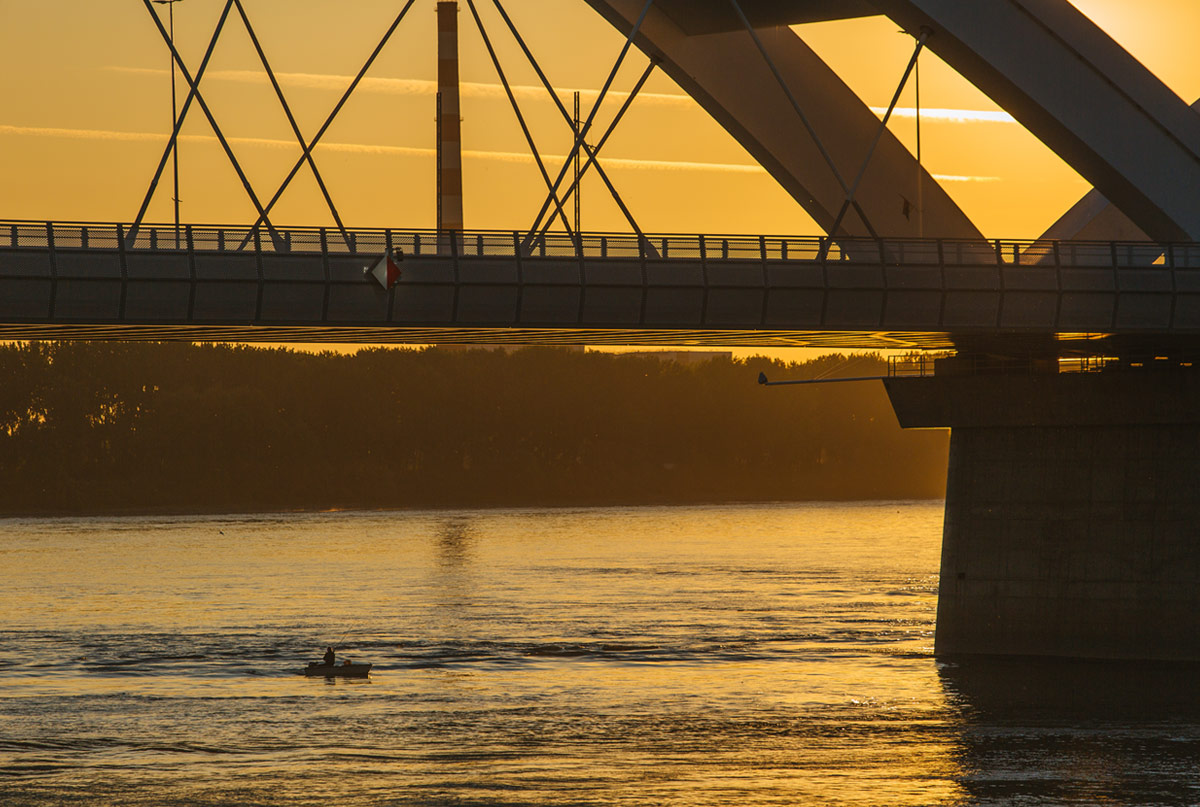
On the right side of the Danube is Sremska Kamenica, a part of Novi Sad that leans on the slopes of Fruška Gora. In its center, you will find the Serbian Orthodox Church of the Nativity of the Mother of God and the house where Jovan Jovanović Zmaj lived — currently the site of the Zmaj Museum. The Kamenica Park and the Marcibanji – Karačonji Castle (1836) located within are particularly attractive.
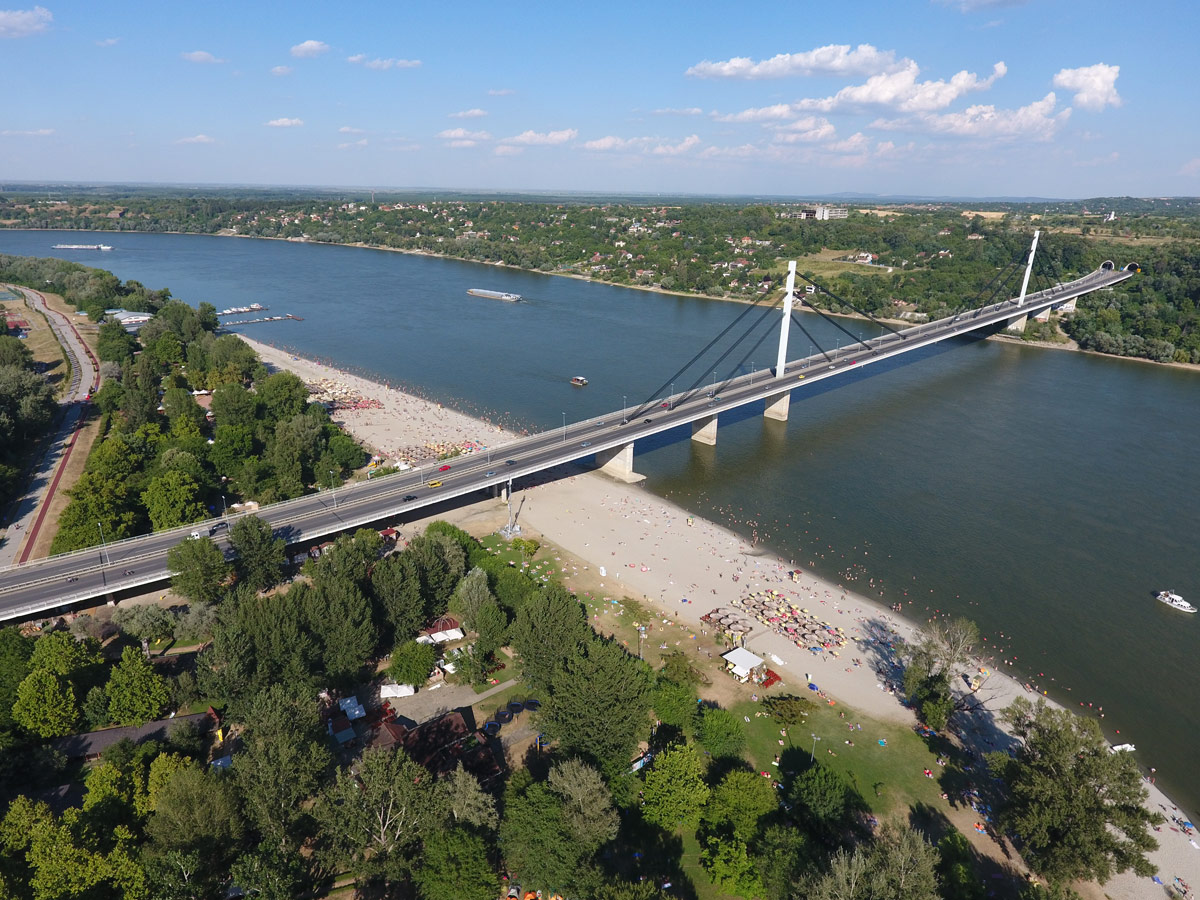
There are many exciting sights on the left side of the Danube: the Belgrade quay and the numerous beaches along the coast, with Štrand being the most popular one. It is equipped with all the necessary infrastructure and becomes one of the city’s liveliest areas every summer, hosting sports competitions, concerts, festivals, etc.
Ribarsko ostrvo and Kamenjar, located on the city’s outskirts, are home to numerous taverns, restaurants, resorts and piers, where you can book a ride on the Danube and visit places like Kamenjar, Mačkov Sprud, Rakovački Dunavac, Love Island, etc.
City Surroundings
The broader area of the City of Novi Sad leans, in part, on the Fruška Gora National Park, with its picnic areas, intact ecosystems, and many Serbian Orthodox monasteries. Farms, rural areas, and wine regions can also be found in the vicinity of the city. Visitors can travel along four excursion routes:
• towards Čenej — an old village in Bačka, known today as a farmers’ settlement, preserving the spirit of the past. Here you will find the best local food and horses running across the plains;
• towards Fruška Gora — the national park spanning about 25,000 hectares which include Sremski Karlovci, Vrdnik, numerous monasteries, vineyards, and untouched nature;
• towards Futog — well known for its cabbage production, with written records dating back to the 16th century. Futog cabbage is protected by its geographical origin as a product of national significance;
• towards Kovilj and its surroundings — this unique nature reserve spans 4,840 hectares and is home to many rare bird species.
Besides being famous for its multiculturalism, love and tolerance, Novi Sad has many places for having a good time. Here you can find it all: from restaurants with local Vojvodina cuisine, cafes, quay overlooking the famous Petrovaradin Fortress, to youth and cultural centers which gather a more alternative crew and the ultimate nightlife street of Laze Telečkog.
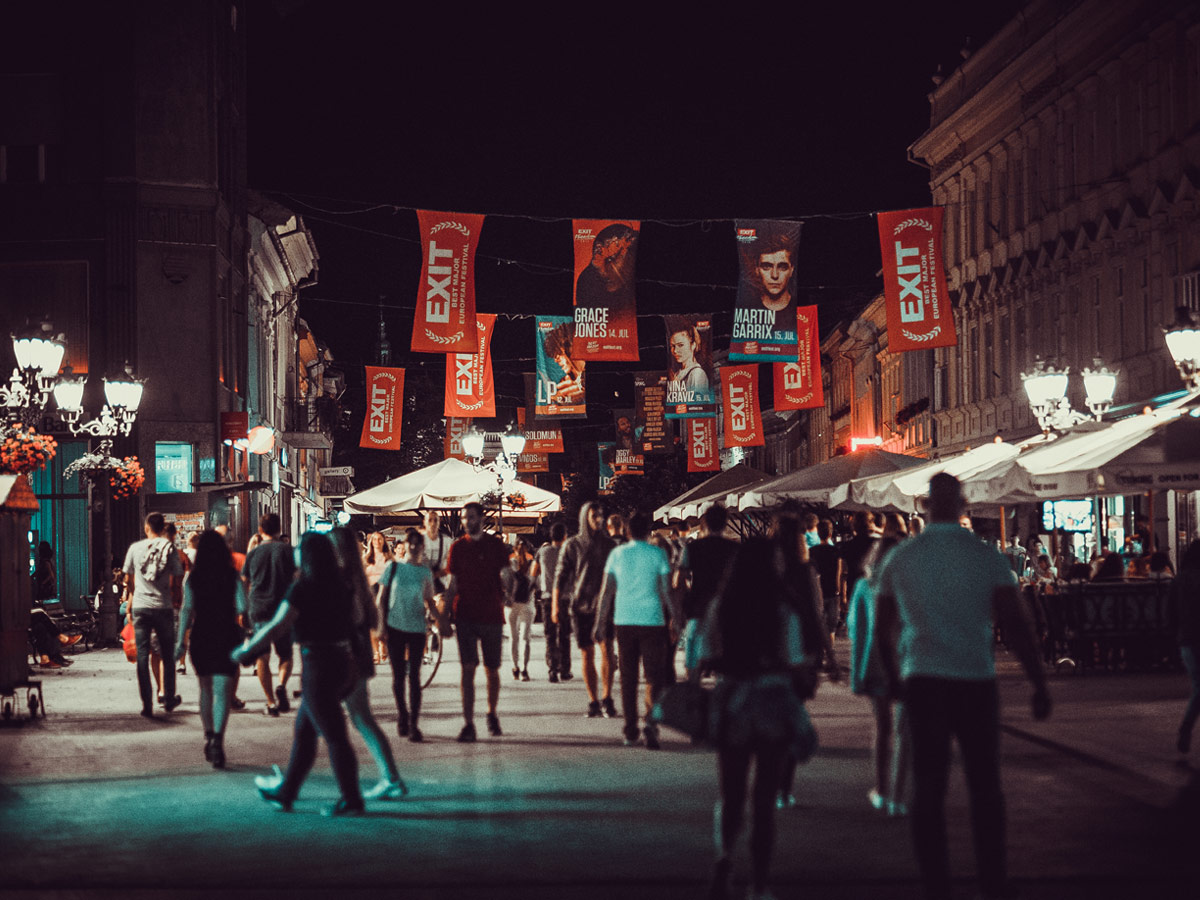
The most prominent get-together spots for locals are the Liberty Square, the cathedral and Zmaj Jovina Street. In close proximity you’ll find the Dunavski Park, but there are also a lot more of green parks over the city such as Limanski, Futoški and Kamenički.
Mapped out this way, the city provides a place for everyone – the locals, as well as the tourists.
Photo: EXIT photo team, Luka Šarac (Tourism Organization of Serbia)